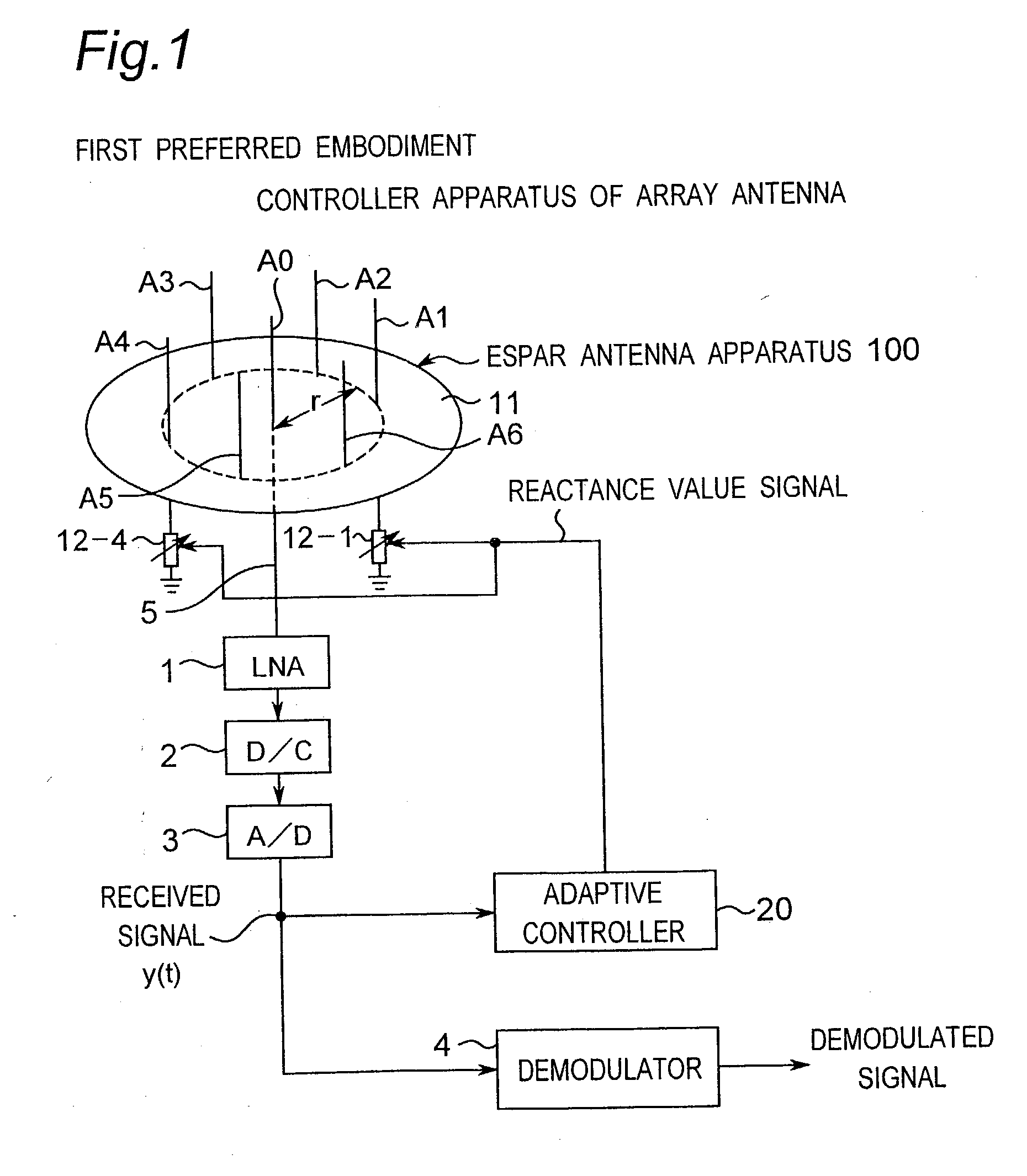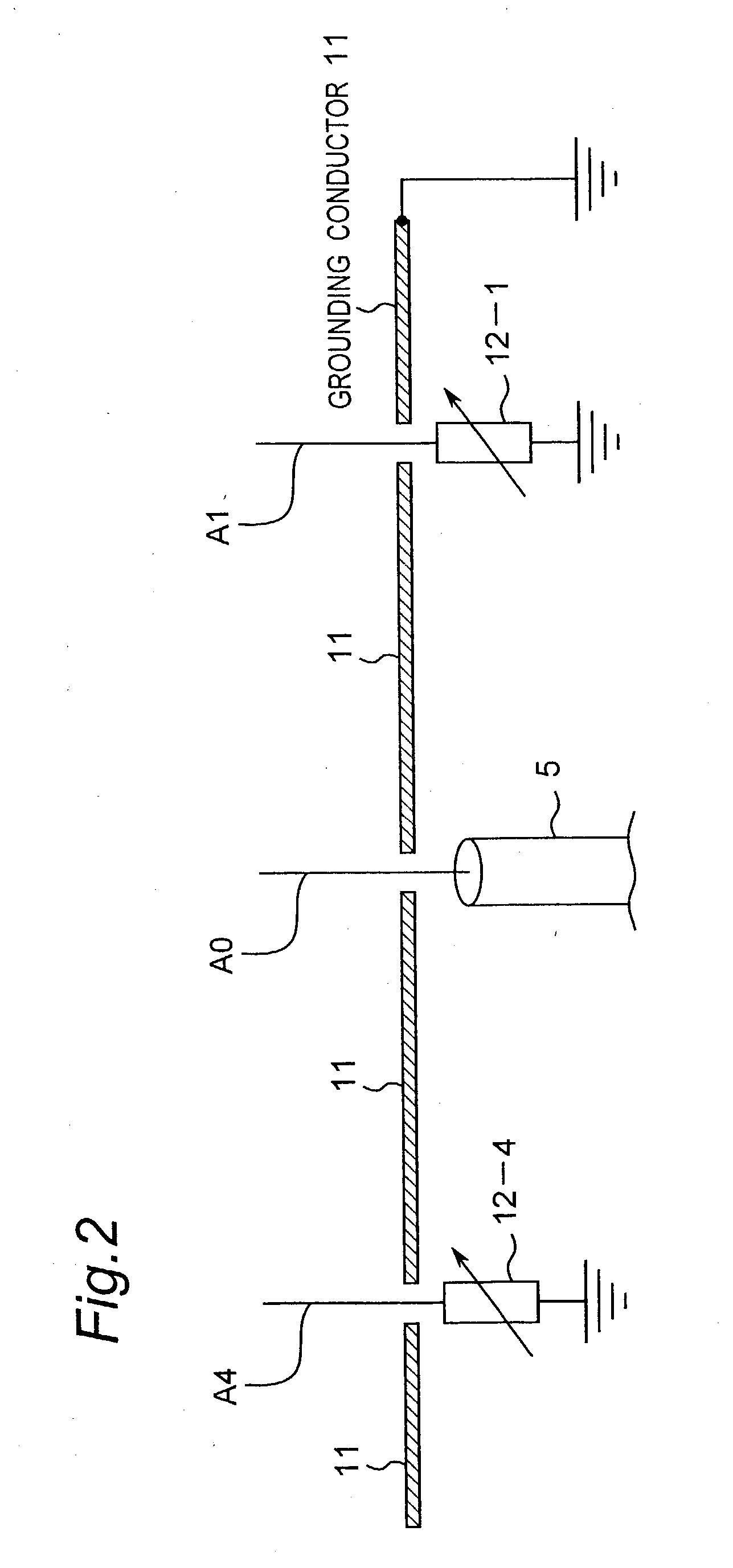Method for controlling array antenna equipped with a plurality of antenna elements, method for calculating signal to noise ratio of received signal, and method for adaptively controlling radio receiver
a technology of array antenna and antenna element, applied in the direction of direction finders using radio waves, pulse techniques, instruments, etc., can solve the problems of complex circuit for adaptive control, inability to calculate the ratio in real time for the received signal, and inability to use methods
- Summary
- Abstract
- Description
- Claims
- Application Information
AI Technical Summary
Benefits of technology
Problems solved by technology
Method used
Image
Examples
third preferred embodiment
[0180] FIG. 10 is a block diagram showing a construction of a controller apparatus of an array antenna according to a third preferred embodiment of the present invention. As shown in FIG. 10, the controller apparatus of the array antenna of the present preferred embodiment is constructed of an ESPAR antenna apparatus 100 provided with one radiating element A0 and six parasitic elements A1 to A6 and an adaptive controller 20a and is particularly characterized in that the adaptive controller 20a is provided in place of the adaptive controller 20 of the first preferred embodiment.
[0181] In this case, as a radio signal which is transmitted from the transmission side and used for the adaptive control on the reception side, as described in detail later, there is used, for example, a radio signal modulated by the modulation method that includes digital amplitude modulation such as multi-valued quadrature amplitude modulation (QAM: Quadrature Amplitude Modulation) such as 16QAM, 64QAM and 2...
fourth preferred embodiment
[0199] FIG. 13 is a block diagram showing a construction of a controller apparatus of an array antenna according to a fourth preferred embodiment of the present invention. This fourth preferred embodiment is characterized in that an adaptive controller 60a is provided in place of the adaptive controller 60 of the second preferred embodiment.
[0200] In the present preferred embodiment, the adaptive controller 60a calculates phase shift control voltages v.sub.p (p=1, 2, . . . , P) corresponding to the amounts of phase shift of variable phase shifters 53-1 to 53-P for directing the main beam of the array antenna 50 in the direction of the desired wave and directing nulls in the directions of the interference waves on the basis of the received signal y(t) so that the value of the above-mentioned objective function (the Equation (22)) becomes the minimum by executing processing similar to that of the adaptive control processing of FIG. 3 by using, for example, the steepest gradient method...
fifth preferred embodiment
[0208] FIG. 19 is a block diagram showing a construction of a controller apparatus of an array antenna according to a fifth preferred embodiment of the present invention. As shown in FIG. 19, the controller apparatus of the array antenna of the present preferred embodiment is constructed of an ESPAR antenna apparatus 100 provided with one radiating element A0 and six parasitic elements A1 to A6, a radio receiver 110 and an adaptive controller 120.
[0209] In this case, the transmitted radio signal is subjected to m-PSK modulation (m is herein an integer equal to or larger than two). The adaptive controller 120 is constructed of a digital calculator of, for example, a computer and is characterized in that the reactance values of variable reactance elements 12-1 to 12-6 for directing the main beam of the ESPAR antenna apparatus 100 in the direction of the desired wave and for directing nulls in the directions of the interference waves are calculated and set on the basis of the received ...
PUM
 Login to View More
Login to View More Abstract
Description
Claims
Application Information
 Login to View More
Login to View More - R&D
- Intellectual Property
- Life Sciences
- Materials
- Tech Scout
- Unparalleled Data Quality
- Higher Quality Content
- 60% Fewer Hallucinations
Browse by: Latest US Patents, China's latest patents, Technical Efficacy Thesaurus, Application Domain, Technology Topic, Popular Technical Reports.
© 2025 PatSnap. All rights reserved.Legal|Privacy policy|Modern Slavery Act Transparency Statement|Sitemap|About US| Contact US: help@patsnap.com



